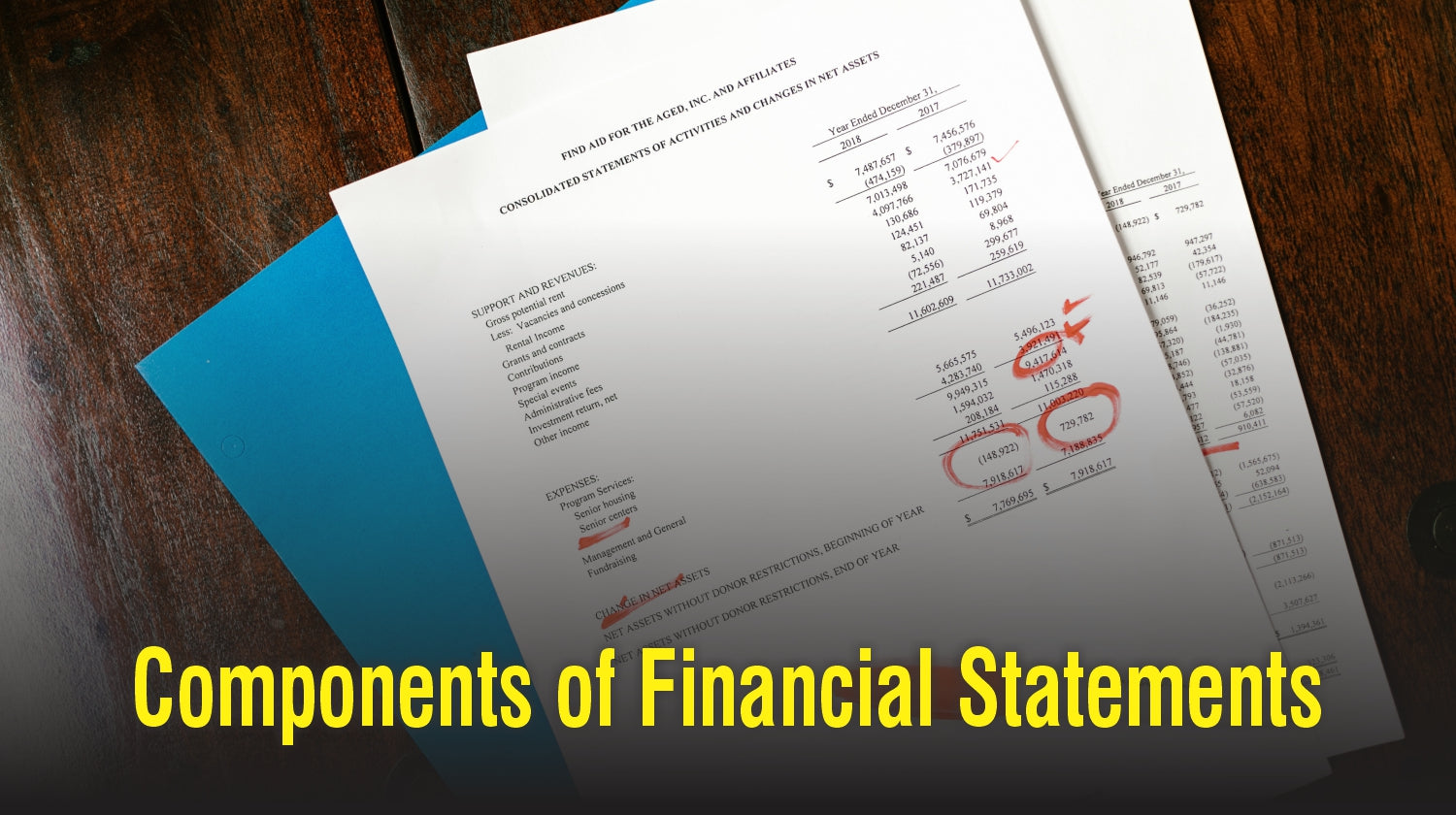
Components of Financial Statements
by Vibrant Publishers
For a non-finance person, it is bewildering to understand the long financial statements. Questions like “what does a financial statement include?” “how to read a financial statement?” and “who needs financial statements?” may have crossed your mind. In this blog, we strip apart the components of an financial statement, show what financial statements look like and who needs financial statements.
There are three main components to a company’s financial statements:
a) Balance Sheet
b) Income statement (also called Profit and Loss statement)
c) Statement of Cash Flows
These days, financial statements also contain several mandatory and voluntary disclosures. Below are simple examples of the three main components.



Below are the main users of financial statements.
a) Lenders
Lenders want to ensure that the company would be in a position to pay interest on a regular basis and the principle at maturity. These are generally banks, individuals, financial institutions and even other companies.
b) Investors
Individual as well as corporate investors invest in a company if they feel that the company can provide attractive returns, based on the risk profile of the company. They can ascertain this by looking at the company’s financial statements and assume that the past performance is also representative of the future.
c) Management
Although management has a more detailed view by way of managerial accounting, there are still things in the financial statement that they use, like sales growth, profit margins, cash available, etc.
d) Suppliers
Extending supplier credit is a norm in most industries but suppliers are generally more comfortable extending greater credit periods or greater credit amounts to those companies who they feel would be in a better position to make the payment on the agreed date. They do so by looking at the company’s financial statement that provides information about the financial strength and cash available with the company. They also look at the company’s past payment record to make a decision.
e) Customers
There are some goods which require a good deal of after-sales support, like aeroplanes. Customers want to know that the aeroplane manufacturer will not go out of business after they buy the plane from them. Financial statements help them gauge the company’s financial strength.
f) Employees
Financial statements often determine employees’ bonus, pension, health care benefits, etc. A financially strong company is also preferred by employees looking for a secure job.
g) Competitors
Companies often look at the competitor’s financial statements to compare their relative performance in terms of revenue, profit, margins etc. This information helps companies to benchmark the best in the industry and devise plans to match or better them.
h) Government Agencies
Federal and state governments, IRS, SEC and other agencies frequently refer to the financial statements of companies to ensure investors’ safety and to make policy decisions.
i) Press/Media
Whenever the press wants to report about a company, it can find a significant amount of information in the company’s financial statements. Significant events like a large drop in
profits, huge losses, and questionable practices are generally predicted with the help of the data present in the financial statements.
This excerpt is taken from the book Financial Accounting Essentials You Always Wanted To Know by Kalpesh Ashar. His books are written in a simple-to-understand manner, avoiding technical jargon. This book elucidates the concepts of financial accounting with the help of examples, practice exercises and case studies! Check out the book here.
© 2022, By Vibrant Publishers, USA. All rights reserved. No part of this publication may be reproduced or distributed in any form or by any means, or stored in a database or retrieval system, without the prior permission of the publisher.
Share











